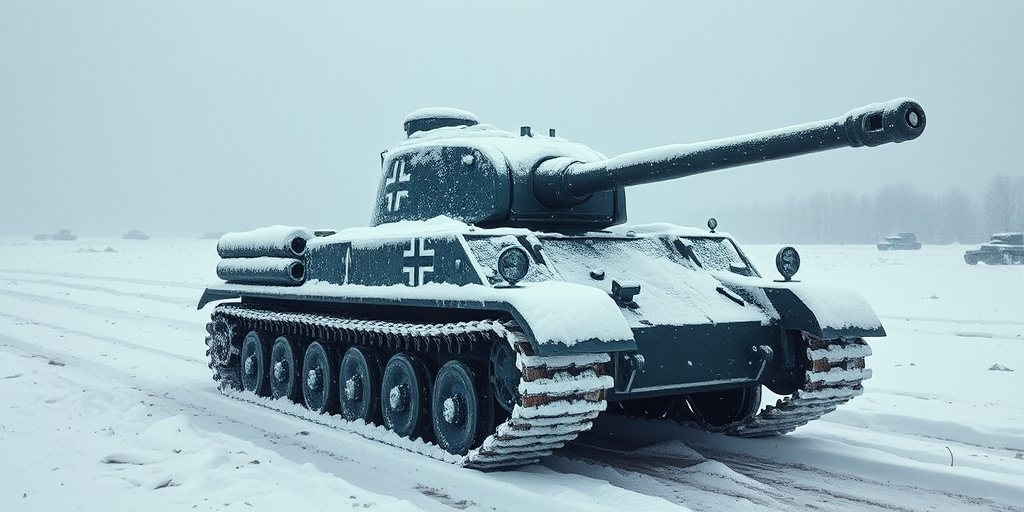Could a last-ditch offensive amid brutal winter conditions redefine the fate of an entire theater of war? In December 1944, German forces launched a fierce push along an 85-mile front with audacious ambition and critical miscalculations. By pitting eight divisions against a formidable Allied defensive network, they set the stage for a high-stakes gamble steeped in tactical innovation and logistical chaos. This analysis unpacks how Germany’s final, contentious maneuver not only challenged established military doctrine but also reshaped Allied operational strategy and the course of history.
German Strategic Planning: The Final Gamble of the Battle of the Bulge

Hitler’s final offensive decision emerged from a state of desperation as dwindling resources and mounting pressure pushed German leadership into a high-risk maneuver. With only about eight divisions committed against an Allied force equatable to 35 divisions, German planners believed that a rapid, mechanized counterattack could fracture enemy lines and capture critical logistical nodes such as Antwerp. The strategy hinged on creating a disruption—a bulge—in the Belgian front, designed to force a rapid reallocation of Allied reserves. However, the plan was riddled with inherent flaws from the start.
Overreliance on swift, mechanized advances meant that any disruption in fuel and ammunition supplies would rapidly undermine the offensive’s momentum. Harsh winter conditions compounded these obstacles, as icy, frozen roads hindered mobility and prevented rapid resupply. High command misjudgments further exacerbated the situation, as overconfidence in Axis counterattack dynamics clouded the recognition of potent Allied reinforcements and robust defensive preparations.
- Scarce fuel and inadequate ammunition exposed critical vulnerabilities.
- A stark force disparity, with only eight divisions versus 35 Allied formations, highlighted strategic miscalculations.
- Overconfidence in rapid mechanization led to underestimating the enemy’s adaptive response.
- Poor logistical planning and harsh winter conditions crippled the intended swift advances.
These intertwined challenges underscore the complex, high-stakes gamble that ultimately sapped the strength of this final German offensive.
Key Engagements and Battlefield Turning Points in the Battle of the Bulge: Germany’s Final Gamble

The fierce confrontations at Elzenborn Ridge and Bastogne shaped the battle’s trajectory and exposed the limitations of the German offensive. American infantry resistance amidst bitter cold conditions, combined with armored division clashes, transformed isolated skirmishes into pivotal turning points that gradually shifted momentum. Initial advances by German forces were met with organized counterattacks that inflicted severe casualties and disrupted the momentum of the assault. Notable among these events was the heroic stand at Bastogne, where determined soldiers held out despite being surrounded and under constant artillery bombardment. Equally, the bloody massacre near Malmedy marked a tragic chapter, with nearly 100 soldiers found dead, a stark reminder of the human cost of the conflict.
The evolving weather conditions and timely Allied reinforcements further undermined the German strategy, with improved visibility and mobility favoring the defenders. As engagements unfolded along the front, the tactical brilliance of American commanders, combined with the resolute spirit of infantry troops, caused significant setbacks for the Axis forces. The operational narrative of the battle is documented through casualty recount analysis and detailed combat accounts that highlight the unpredictable ebb and flow of fortunes on the battlefield.
- The defense at Bastogne halted a critical German breakthrough.
- Staunch infantry resistance in freezing weather sapped enemy morale.
- Armored division clashes disrupted coordinated German advances.
- The tragic Malmedy massacre underscored the brutal cost of the offensive.
- Swift Allied reinforcements shifted the operational balance decisively.
These pivotal events encapsulate how cohesive defensive actions and strategic countermeasures ultimately stifled Germany’s final gamble.
Final Words
In the action, this article illuminated the historical foundations, strategic miscalculations, tactical innovations, and critical turning points of the Battle of the Bulge: Germany’s Final Gamble.
We examined operations under harsh winter conditions, complex logistical hurdles, and pivotal engagements that reshaped the battlefield.
This detailed exploration provides insights into both strategic missteps and resolute combat efforts, emphasizing the enduring impact of these historical events.
Positive lessons of resilience and innovation continue to inspire modern military strategy.
FAQ
What was the Battle of the Bulge and when did it occur?
A: The Battle of the Bulge was Germany’s final major offensive on the Western Front, launched on December 16, 1944. It created a massive bulge in Allied lines across an 85-mile front in the Ardennes region.
How did weather conditions affect the battle?
A: Extreme winter conditions severely impacted the battle, with frozen roads hampering vehicle movement. The harsh weather limited visibility, complicated logistics, and caused numerous casualties from frostbite and exposure.
What were Germany’s objectives in launching this offensive?
A: Germany aimed to split Allied forces and capture the port of Antwerp, hoping to buy time for V2 rocket development. Hitler believed this offensive could reverse Germany’s deteriorating position in the war.
How many casualties occurred during the battle?
A: The battle resulted in over 100,000 German casualties and more than 80,000 Allied losses. The engagement concluded on January 28, 1945, marking one of the bloodiest battles of World War II.
What made this offensive Germany’s “final gamble”?
A: The offensive represented Germany’s last major strategic operation, launched with dwindling resources and limited fuel supplies. Hitler committed eight divisions against 35 Allied divisions in a desperate attempt to change the war’s outcome.
What were the key turning points in the battle?
A: The defense of strategic positions like Elzenborn Ridge and Bastogne, combined with improved weather conditions and Allied reinforcements, gradually halted the German advance and reversed their initial gains.
How did the Battle of the Bulge impact the war’s outcome?
A: The failed offensive depleted Germany’s remaining military resources and exposed critical weaknesses in their command structure. This accelerated Allied advances from both east and west, hastening Nazi Germany’s collapse.
